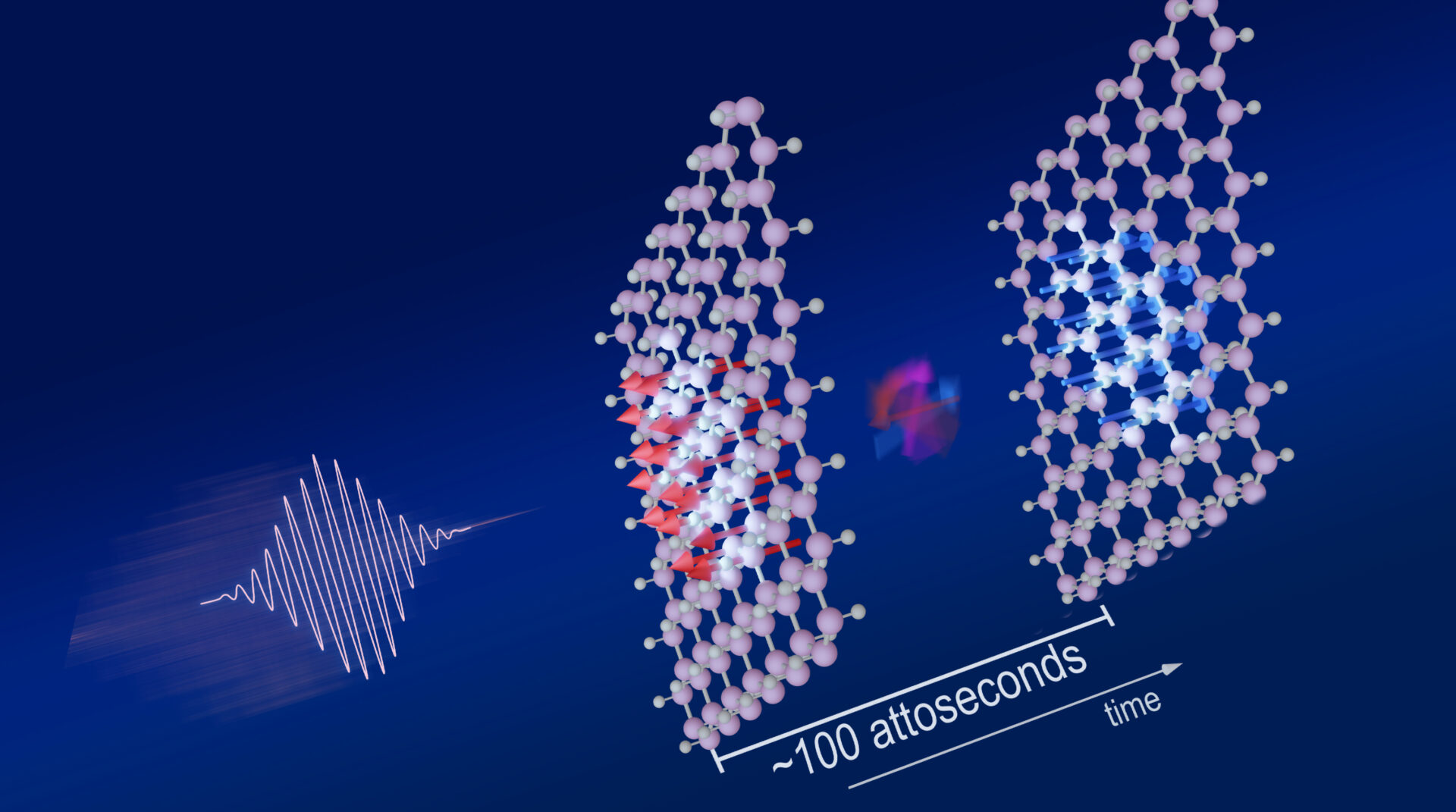Intense laser light can induce magnetism in solids on the attosecond timescale – the fastest magnetic response to date. That is the finding reached by theoreticians, including 2021 Fellow Ofer Neufeld, at the Max Planck Institute and recently published in npj Computational Materials.
The team used advanced quantum mechanical simulations to investigate the magnetization process induced by light in several 2D and 3D materials. The results could improve the performance of magnetic-based memory devices and are an important step for incorporating light into electronic circuits to improve their speed up to the petahertz range (so-called petahertz electronics).

Ofer and his team explored the fundamental limit of how fast magnetism can develop. Ofer comments: “The most exciting part is that our work establishes a potential speed-limit for magnetic phenomena – the few tens of attoseconds timescale, which has thus far remained an open question. We have shown that magnetism should evolve at its fastest speed in the same velocity with which electrons move, typically no more than attoseconds.”
Our results highlight the importance of using interdisciplinary scientific methods to advance knowledge…The methodology relies on quantum chemistry, the analysis relies on nonlinear optics and electromagnetic theory…
The results offer fascinating new insights into the fundamentals of light-induced magnetism – the team discovered that when intense lasers irradiate some materials, a highly nonlinear effect simultaneously converts multiple photons into magnetism, a mechanism that differs from previously known responses. This process strongly depends on the laser’s properties, which should eventually allow to precisely control materials’ magnetic properties by tuning the laser source.
Ofer continued, “Our results highlight the importance of using interdisciplinary scientific methods to advance knowledge. For instance, we employed large-scale super-computer simulations to understand how materials interact with light. The methodology relies on quantum chemistry, the analysis relies on nonlinear optics and electromagnetic theory, and the applications have the potential to be wide across condensed matter, spectroscopy, and electronics. Through my journey as a Schmidt Science Fellow, I have learned to appreciate the paramount need for such diverse tools and methods coming together from different communities.”